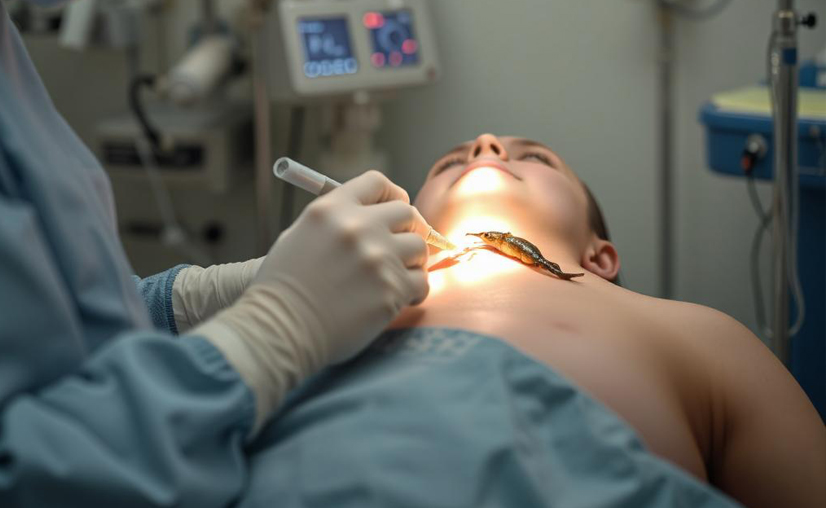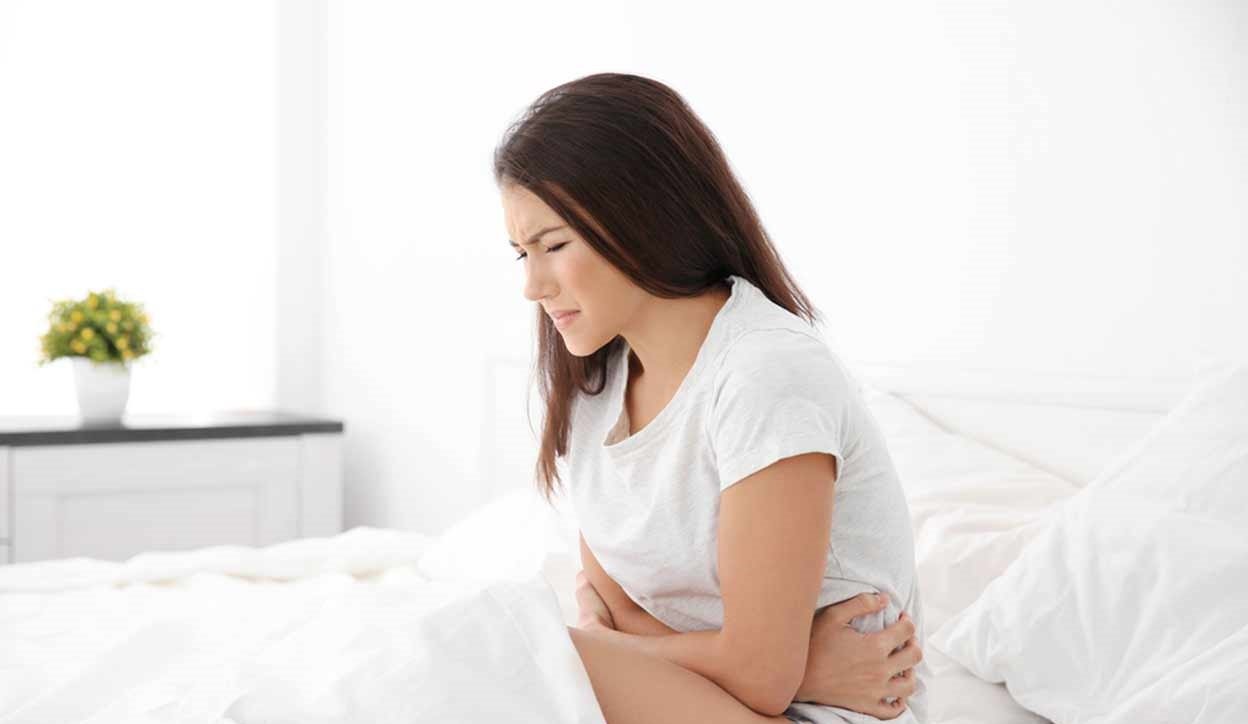Leech Therapy for Gynecological Recovery Featured Snippet Summary: Leech therapy might help patients recover from gynecological operations by promoting blood circulation and relieving congestion; however, scientific support remains scarce and there is a possible risk of infection. Introduction: Leech Therapy for Gynecological Recovery Following gynecological surgeries such as hysterectomies or reconstructive operations patients experience multifaceted healing processes. Hirudotherapy represents an ancient healing technique becoming increasingly popular because of its ability to boost recovery through blood circulation enhancement and tissue congestion reduction. The guide examines the potential of leech therapy to improve recovery after gynecological procedures by evaluating its advantages and risks while discussing how it fits with standard medical treatment to provide patients with useful insights about alternative recovery methods. Related Keywords: hirudotherapy, wound healing, venous congestion, gynecological recovery. What Is Leech Therapy? Medicinal leeches (Hirudo medicinalis) extract 5-15 ml of blood during leech therapy while secreting saliva that contains: Hirudin: Anticoagulant to prevent clotting. Vasodilators: Enhance blood flow. Anti-inflammatory agents: Reduce swelling. The FDA has approved leech therapy because of its historical surgical use which makes it widely applied in plastic and reconstructive surgery to reduce venous congestion and aid healing processes. While its application in gynecology lacks broad validation it shows potential benefits for particular clinical situations. How Leech Therapy May Aid Gynecological Healing Leech therapy helps patients recover better from operations such as pelvic reconstructive surgery and hematoma evacuation. Relieving Venous Congestion Vaginal flap reconstruction procedures can result in venous congestion which manifests as blood pooling from damaged veins and poses a risk to tissue survival. The application of leech therapy helps eliminate excess blood while improving circulation which supports tissue preservation. A research case demonstrated effective hematoma treatment through hormone pellet insertion combined with leech therapy which helped prevent infections and supported healing. Enhancing Wound Healing The anticoagulants and vasodilators present in leech saliva supply surgical areas with oxygen and nutrients which accelerates wound healing. Ayurvedic medicine practices utilize leech therapy to promote healing in gynecological wounds but lacks robust scientific evidence. Reducing Inflammation Post-surgical swelling can delay recovery. The anti-inflammatory substances in leech therapy help to decrease swelling and pain while promoting healing following surgical procedures such as myomectomy. Evidence and Limitations Support: Research demonstrates that leech therapy helps remove hematomas and improves flap survival during reconstructive operations with 65-80% successful salvage rates reported in plastic surgery cases. Researchers documented 87% flap integration success with leech therapy for hematoma treatment in a 2023 study. While research on gynecological applications of leech therapy remains sparse it demonstrates effectiveness in resolving hematomas. Limits: No large-scale trials exist for gynecological procedures. The majority of existing evidence comes from plastic surgery research and individual case reports. A 2024 review study found that hirudotherapy research contained biases because they used small study samples. Regulation: The FDA has given approval for leech use in treating venous congestion but not in gynecological treatments. Risks and Safety Infection: Leeches carry Aeromonas bacteria, risking wound infections. Antibiotics (e.g., fluoroquinolones) are required during therapy. Bleeding: Patients who have clotting disorders or have undergone a hysterectomy face increased risk from prolonged bleeding incidents. Contraindications: The treatment should not be administered to patients with anemia or pregnant women and those who are younger than 18 years old. Safety Tip: Always perform leech therapy in certified healthcare facilities where medical professionals provide supervision. Integrating with Gynecological Care Leech therapy should complement standard care: Conventional: Patients receive antibiotics for infection treatment combined with pain management strategies and follow-up imaging after surgical procedures. Lifestyle: To aid recovery patients need sufficient rest along with proper hydration and diligent wound care. Consultation: Work with both a gynecologist and a hirudotherapy specialist to determine if leech therapy is appropriate for patients who need treatment for hematomas or flap procedures. Internal Link: Our Complete Guide to Gynecological Health Issues offers recovery tips for patients to explore. Patient Experiences The hematoma that developed after a hormone implant in a postmenopausal patient resolved with leech therapy which eliminated the need for additional surgery. Ayurvedic clinics provide anecdotal evidence of accelerated wound healing after gynecological procedures without clinical validation. FAQ: Leech Therapy for Gynecological Healing Is leech therapy effective in promoting healing outcomes after gynecological surgery?Leech therapy could reduce congestion and improve wound healing according to preliminary evidence which remains insufficient. Is leech therapy safe post-hysterectomy?The bleeding risks render leech therapy unsafe unless supervised by medical professionals and demand consultation with a specialist. How does leech therapy promote recovery?This treatment improves circulation and decreases swelling at the site where surgery was performed. What research exists on the application of leech therapy for recovering from gynecological treatments?The current research on leech therapy for gynecological recovery shows potential but lacks extensive clinical testing. Conclusion: Leech Therapy for Gynecological Recovery? Leech therapy can improve surgical recovery in gynecological procedures through venous congestion relief and increased blood flow demonstrated during hematoma resolution and reconstructive surgery. The therapy’s use remains restricted to complementary applications monitored by professionals because current research lacks sufficient evidence and infection risks exist. Begin with standard care methods and then seek specialist advice to decide if leech therapy is appropriate for your healing process after gynecological procedures. Call to Action: Consult your gynecologist about leech therapy or visit our Health Blog for suggestions on recovery. Share your story in the comments!
Your Complete Guide to Common Gynecological Health Issues
Introduction: Understanding Gynecological Health Issues The female reproductive system faces many gynecological health problems which create symptoms such as pelvic pain and irregular periods for millions of people. The comprehensive guide examines common gynecological health problems by detailing their causes, symptoms and exploring treatment options alongside preventive measures. By understanding these health issues you can empower yourself to make informed decisions about your health using expert-backed insights and practical solutions whether dealing with PCOS or seeking UTI relief. Related Keywords: PCOS, endometriosis, UTIs, menstrual disorders, pelvic pain. What Are Gynecological Health Issues? Gynecological health concerns include abnormalities affecting reproductive organs such as the uterus, ovaries, fallopian tubes, cervix, and vagina. These health issues present a spectrum that extends from harmless infections to persistent disorders which impact female individuals throughout their entire lifespan. According to statistics from the United States 20% of women experience pelvic pain while 10% suffer from endometriosis. Women need gynecologists to treat these conditions because failure to provide timely care can lead to infertility and chronic pain. Source: CDC on women’s reproductive health prevalence. Common Gynecological Health Issues Menstrual and Hormonal Disorders Polycystic Ovary Syndrome (PCOS): A hormonal imbalance which leads to irregular menstrual cycles, acne, and ovarian cysts impacts between 6 and 12 percent of women. Dysmenorrhea: Menstruating women between 50% to 90% experience painful periods due to prostaglandins or endometriosis. Menorrhagia: Heavy menstrual bleeding often results from hormonal problems or fibroid development. Reproductive Tract Conditions Endometriosis: Endometriosis occurs when uterine tissue develops outside the uterus leading to pelvic pain and infertility and it affects 10% of women. Uterine Fibroids: The majority of women develop non-cancerous uterine growths which cause pain and heavy bleeding by their fifth decade with prevalence between 20-80%. Pelvic Inflammatory Disease (PID): Reproductive organ infection often results from STIs and leads to pain or infertility. Infections Urinary Tract Infections (UTIs): Urinary tract infections from bacteria produce burning sensations during urination and occur in 50-60% of women at least once. Yeast Infections: The fungal overgrowth which causes itching and discharge affects 75% of women. Bacterial Vaginosis (BV): A bacterial imbalance that produces odor and discharge affects 30% of women between 15 and 44 years old. Other Conditions Cervical Cancer: Cervical cancer originates from HPV infection and initially shows no symptoms yet screening lowers death rates by 70%. Ovarian Cysts: Fluid-filled sacs in the ovaries are typically noncancerous but painful when they either grow too large or burst. Symptoms to Watch For Symptoms vary but include: Pelvic or abdominal pain Irregular, heavy, or painful periods Abnormal vaginal discharge or odor Pain during intercourse Burning or frequent urination Fatigue, weight gain, or infertility Warning: Immediate medical attention is needed for severe pelvic pain or heavy bleeding with clots along with fever and discharge because these symptoms can signal emergencies like PID or ectopic pregnancy. Causes and Risk Factors Causes include: Hormonal Imbalances: Drive PCOS, dysmenorrhea, and fibroids. Infections: Infections from bacteria such as UTIs and BV or from viruses like HPV can result in inflammation or cancer. Lifestyle: The conditions of PCOS and menstrual disorders become more severe with obesity, smoking habits or stressful situations. Genetics: Endometriosis and ovarian cancer risks increase when there is a family history of these conditions. Sexual Health: Engaging in unprotected sexual activities or maintaining multiple sexual partners increases the likelihood of contracting STIs and developing PID. Source: NIH on gynecological condition risk factors. Diagnosis of Gynecological Health Issues Gynecologists use: Pelvic Exams: Inspect reproductive organs for abnormalities. Ultrasound: Visualizes fibroids, cysts, or endometriosis. Blood Tests: Evaluate hormone levels to diagnose PCOS and thyroid problems. Pap Smear/HPV Testing: Screens for cervical cancer. Cultures: Identify UTI, BV, or yeast infection pathogens. Women must begin gynecological exams at age 21 or sooner if symptoms appear because such exams are essential. Treatment Options for Gynecological Health Issues Treatments vary by condition. Medications Hormonal Therapies: Women with PCOS or dysmenorrhea need birth control while GnRH agonists treat endometriosis. Antibiotics: Antibiotics such as amoxicillin and metronidazole treat UTIs, BV, and PID. Antifungals: Clear yeast infections (e.g., fluconazole). Non-Surgical Interventions Lifestyle Changes: Losing weight addresses PCOS while increasing dietary fiber helps regulate menstrual cycles. Physical Therapy: Relieves pelvic pain in endometriosis or dysmenorrhea. Probiotics: Probiotics help maintain vaginal flora balance to prevent BV or yeast infections. Surgical Options Hysterectomy: Removes uterus for severe fibroids or endometriosis. Laparoscopy: Excises endometriosis or ovarian cysts. Myomectomy: Removes fibroids while preserving the uterus. Expert Insight: Early treatment of UTIs helps to protect the kidneys from damage according to Dr. Lisa Patel who practices gynecology. Don’t ignore burning or frequent urination.” Prevention Strategies Prevent gynecological issues with: Regular Screenings: Women should receive yearly medical check-ups along with Pap smears beginning at age 21. Hygiene: Wiping from front to back followed by urinating after intercourse can help prevent UTIs. Safe Sex: Condoms reduce STI/PID risks. Healthy Lifestyle: Manage PCOS effectively by maintaining a balanced diet, engaging in regular exercise and reducing stress levels. Vaccinations: HPV vaccine lowers cervical cancer risk. Internal Link: The Ultimate Guide to Gastrointestinal Conditions contains essential information about infection prevention. When to See a Gynecologist Consult a specialist for: Persistent or severe pelvic pain Irregular periods or heavy bleeding Recurrent infections or abnormal discharge Family history of gynecological cancers Source: The American College of Obstetricians and Gynecologists provides guidelines for determining when medical attention is needed. Living with Gynecological Health Issues Manage chronic conditions by: Education: Join support groups or read NIH resources. Symptom Tracking: Log periods or pain to identify triggers. Mental Health: Counseling for stress from endometriosis or infertility. Patient Story: “Hormonal therapy for PCOS balanced my cycles. I feel empowered,” says Sarah, 29. FAQ: Common Questions About Gynecological Health Issues The main gynecological health problems to understand include PCOS, endometriosis, UTIs, and fibroids which cause symptoms like pain and irregular periods.Gynecological health problems such as PCOS alongside endometriosis and fibroids cause pain and irregular menstrual cycles while UTIs lead to infections. How can I prevent UTIs at home?Stay hydrated and use the bathroom after...




